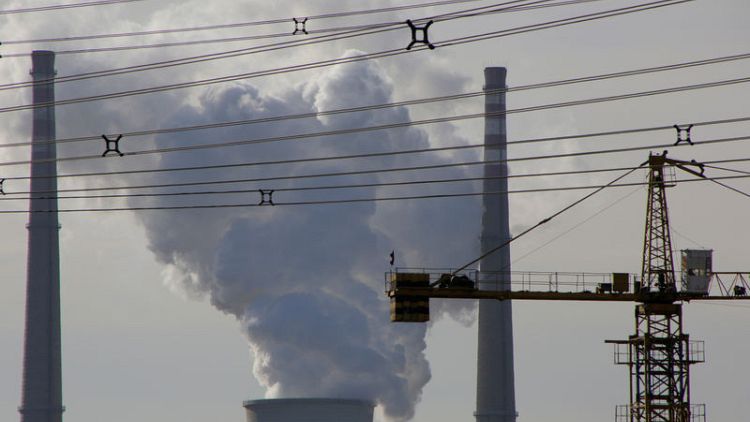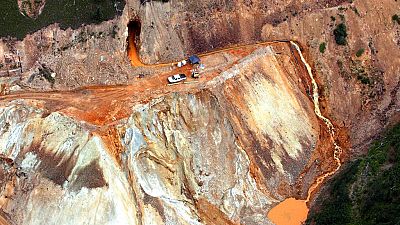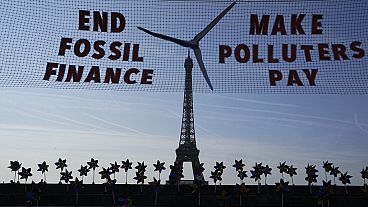By David Stanway
SHANGHAI (Reuters) - China is building more coal-fired power plants and approving dozens of new mines, despite assurances from the world's biggest greenhouse gas emitter that it was serious about fighting climate change.
China's 2021-2030 policy plans are under close scrutiny as the United Nations climate change conference gets under way in Madrid, especially after a new UN report said the world needs to cut carbon dioxide by 7.6% a year over the decade in order to limit temperature rises.
But with the country's economic growth at its slowest in nearly 30 years, industry data as well as speeches from leaders and industry officials suggest a willingness to lean on coal for power, especially in old mining regions.
"We continue to work hard to advance the fight against climate change, but on the other hand, we are indeed facing multiple challenges such as developing the economy, improving the people's livelihoods, eliminating poverty and controlling pollution," said Zhao Yingmin, China's vice environment minister, at a briefing last week.
Beijing promised this year to show the "highest possible ambition" when revising its emissions pledges next year, although it did not commit to more stringent binding targets. But it has built 42.9 gigawatts of new coal-fired power capacity since the start of last year, with another 121 GW under construction.
That compares with 35 GW of coal-fired power added in 2017 and 38 GW in 2016.
Although no net figures are available, regulators also approved 40 new mines with nearly 200 million tonnes of annual capacity in the first three quarters of 2019, compared with 25 million tonnes in all of 2018.
Major state-owned utilities want to shed as much of a third of their older and less-efficient coal-fired capacity in an effort to reduce debt, according to a government document seen by Reuters and confirmed by four sources. But even if they go ahead, the cuts will be offset by newer capacity added elsewhere.
In October, Premier Li Keqiang urged energy officials to promote clean mining and coal-fired power. Ambitious proposals to cap CO2 and fossil fuel use are no longer expected to be included in the 2021-2025 five-year plan, researchers said.
As it looks to stimulate the economy, Beijing may face less internal pressure to accelerate carbon cuts after hitting previous targets with relative ease.
China brought down carbon intensity - CO2 generated per unit of economic growth - by 45.8% from 2015-2018, beating its target by two years. Some forecasts say it could bring CO2 emissions to a peak by 2022, eight years ahead of schedule.
"About this CO2 peak by 2030, I think we will be earlier than 2030," Fu Chengyu, former chairman of oil giant Sinopec, said during a recent panel discussion. "That's a good thing, but I see a slowdown in efforts at the government level that is dragging us down."
SHORTAGES?
A major concern remains the economic fortunes of coal regions like Shanxi, which still relies on the fuel for half its jobs and 80% of its energy.
"The fact that Shanxi's economy relies heavily on coal is unlikely to change in the coming years," said a scholar at a provincial government think tank, speaking on condition of anonymity because of the sensitivity of the matter.
Much of the debate centres on how well renewables can supply reliable "baseload" power to China in the future and support major initiatives like vehicle electrification.
According to a research institute run by the State Grid Corporation, China will need 1,250 gigawatts to 1,400 gigawatts of coal-fired power over the long term to guarantee stable electricity supplies, up from around 1,000 GW now.
Yang Fuqiang, senior adviser with the U.S.-based Natural Resources Defense Council, said the debate depended on electricity demand forecasts: annual growth of less than 4.5% would require no new coal plants.
Though some policymakers have argued capacity is sufficient, with existing plants capable of providing more power, the amount of new approvals suggests the government will err on the side of caution.
"Since coal is still a major resource, we will continue to rely on coal when we need it - and right now for instance, the economy is slowing and renewables are still relatively weak," said Lin Boqiang, dean of the China Institute for Energy Policy Studies.
(Reporting by David Stanway; Additional reporting by Muyu Xu in Beijing; Editing by Gerry Doyle)



